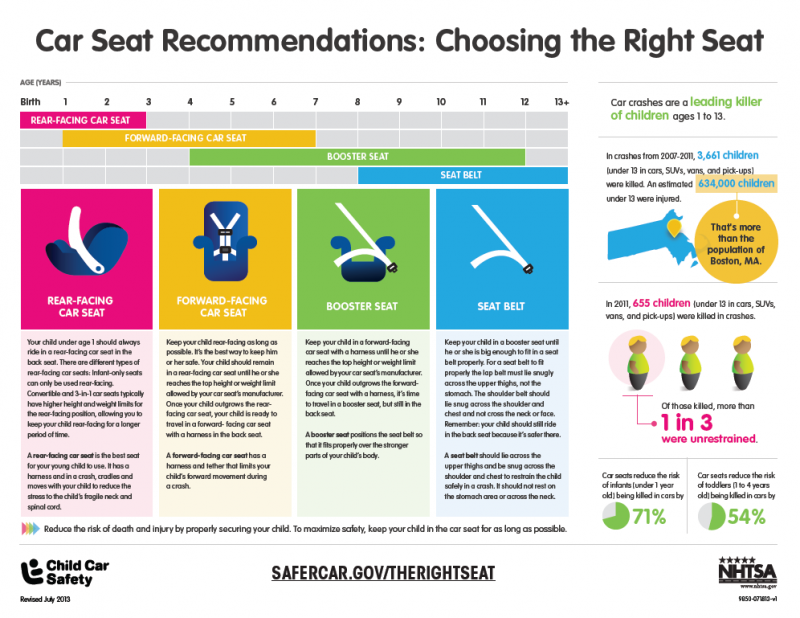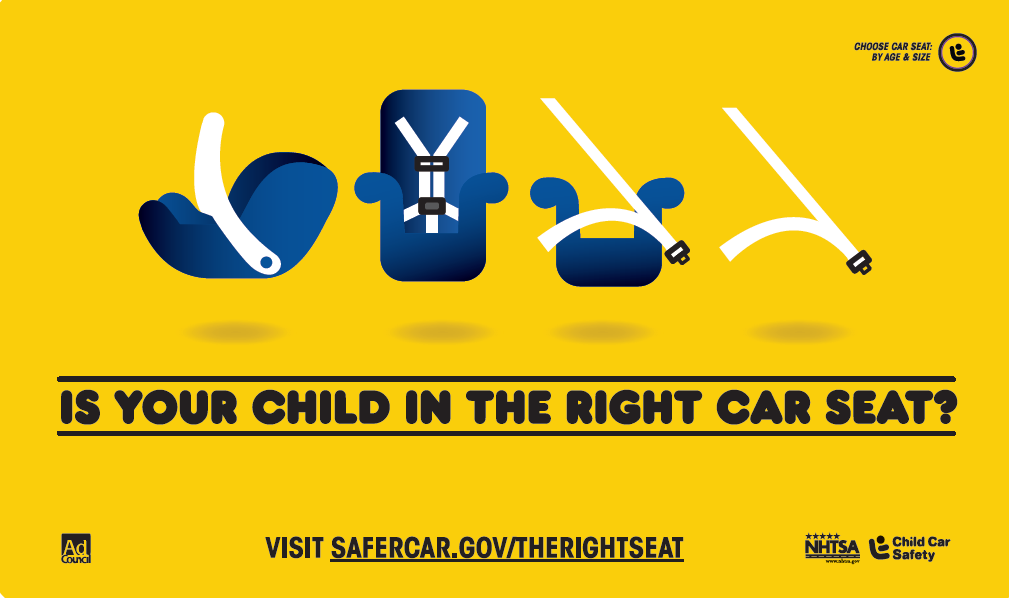Car seats, booster seats and seat belts save lives. In 2014, among children under age 5, car seats saved an estimated 252 lives.
That’s why National Highway Traffic Safety Administration (NHTSA) dedicated Sept. 18-24, 2016, as Child Passenger Safety Week, aiming to raise awareness by informing parents not only to choose, but to correctly install the right seats for their children.
When traveling in a motor vehicle, the best way to protect children is to place them in the right car seats for their age and size, install the seats correctly and ensure that the car seats fit properly in the back seat. Children need to be buckled in and buckled in the right kind of seat — every trip, every time.
NHTSA guidelines to keep children safe while riding in a vehicle:
Birth – 12 Months
- Children under 1 year old should always ride in a rear-facing car seat. There are different types of rear-facing car seats.
- Infant-only seats can only be used rear-facing.
- Convertible and all-in-one car seats typically have higher height and weight limits for the rear-facing position, allowing the child to remain rear-facing for a longer period of time.
1 – 3 Years
- Children should remain in rear-facing car seats for as long as possible. It’s the best way to keep them safe. Children should remain in rear-facing car seats until they reach the top height or weight limit allowed by the car seat’s manufacturer.
- Once a child outgrows the rear-facing car seat, the child is ready to travel in a forward-facing car seat with a harness and tether.
4 – 7 Years
- Keep children in forward-facing car seats with a harness and tether until they reach the top height or weight limit allowed by the car seat’s manufacturer.
- Once a child outgrows the forward-facing car seat with a harness, it’s time to travel in a booster seat, but still in the back seat.
8 – 12 Years
- Keep children in a booster seat until they are big enough to fit in a seat belt properly. For a seat belt to fit properly, the lap belt must lie snugly across the upper thighs, not the stomach. The shoulder belt should lie snugly across the shoulder and chest and not cross the neck or face.
- Remember: keep children in the back seat through age 12.
On Saturday, Sept. 24, 2016, parents, guardians and caregivers can participate in National Seat Check Saturday by visiting local inspection stations to have their children’s car seats inspected by Certified Child Passenger Safety Technicians, who can teach them how to install car seats the correct way to keep children safe. Technicians can help parents and caregivers determine if their children are ready to move from rear-facing to forward-facing seats, from forward-facing seats to booster seats or from booster seats to seat belts. Additionally, technicians can show participants how to register their car seats so that they’ll be notified in case of a recall.
Drivers can have car seats examined at a Child Car Seat Inspection Station or download the free SaferCar app from iTunes or Google Play. The services these stations offer are available year-round, by appointment, and are usually free of charge.





